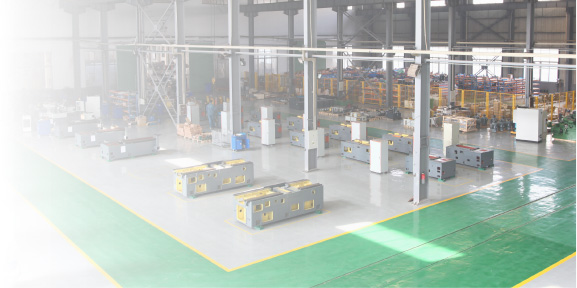

Dynamics
DANOBATE EST-400/EST-650-Centerless Grinding Machine is a new concept of external cylindrical centerless grinding machine
Release time:2020-12-16
The ESTARTA-400 and ESTARTA-650 centerless grinders launched by Denobat are a new concept of cylindrical centerless grinders. The machine tool adopts the most original and advanced technology, and is one of the most rigid centerless grinders on the market today, meeting the most stringent machining requirements. The special attention to rigidity makes the machine tool capable of high-speed grinding (120 m/s CBN grinding wheel grinding).
Continuous processing, no need for tool return, short replication time for workpiece clamping, and high productivity. The positioning mechanism of the bracket and guide wheel has better support rigidity than the top and center frame mechanisms of ordinary cylindrical grinders, with a larger cutting amount, and is conducive to the processing of slender shaft workpieces, making it easy to achieve high-speed grinding and strong grinding. The workpiece of the centerless cylindrical grinder is positioned on the positioning mechanism by the outer circle, and the grinding amount is the margin on the diameter of the workpiece. Therefore, the wear of the grinding wheel, the compensation of the feed mechanism, and the repeated positioning accuracy error of the cutting mechanism have an impact on the diameter and size accuracy of the part. It is only half of a regular cylindrical grinder, does not require a center hole, and is easy to automate loading and unloading in advance. The wide grinding wheel centerless grinder has a pass through mechanism that can increase the machining allowance each time. It can perform sequential or multi wheel grinding on complex surfaces during cutting in grinding, with high productivity and wide applicability. The centerless cylindrical grinder does not have a mechanism to ensure the relative positional accuracy (coaxiality, perpendicularity, etc.) between the ground surface and the non ground surface, resulting in poor roundness when grinding circumferential discontinuous outer surfaces. Grinding surfaces can easily produce odd numbered edge roundness, and when it is large, it often creates the illusion that the measured size is smaller than the maximum physical size, which affects assembly quality and work performance. Machine tool adjustment is complex and time-consuming, requiring adjustments to the bracket height, distance, and related process parameters for each replacement of workpieces with different diameters. Therefore, adjusting the technology is difficult and not suitable for small batch and single piece production. Used for grinding workpieces with shaft shoulders or bosses, as well as conical, spherical, or other rotating workpieces. One through type centerless grinding is a combination of these two. In addition to the centerless grinder, there are also tangent feed grinding and end face feed grinding that allows stepped workpieces to move in and out in the axial direction. The productivity of the centerless cylindrical grinder is relatively high. Mostly used for mass production and easy to achieve automation. Reason: Too high heart height, too large angle of supporting blade, too large angle of supporting blade, too thin supporting blade, poor installation of supporting blade, bending of supporting blade, large grinding amount, poor selection of sanding, poor roundness of sanding, looseness of grinding wheel installation platform, looseness of spindle, external vibration. Countermeasures: Reduce heart height, decrease angle, increase thickness, shrink clamping screws, correct support blade, reduce the number of grinding increases, negotiate with grinding wheel manufacturers, try to adjust before and after balancing, lock screws evenly, relock screws, adjust the spindle of the adjustment wheel, exchange diamonds for relock retainers, and isolate external vibrations. Reason: Low heart height, small support blade angle, high grinding wheel hardness, high grinding pressure, large rough grinding amount, loose adjustment wheel, insufficient cooling water (when grinding hollow objects), poor correction. Heartless grinding machine countermeasures: increase heart height, increase angle, improve propulsion speed, use sharp diamonds to increase correction speed, reduce feed rate and perform the first grinding at a high propulsion speed, re lock screws to adjust the spindle of the adjustment wheel, add coolant at good contact points, and re correct. Reason: Encountering the edge of the grinding wheel, poor adjustment of the guide plate, high dressing speed, diamond damage and wear, and loose diamond retainer are all reasons for the occurrence of spiral marks with equal gaps on the centerless grinder. Countermeasure: The edge of the grinding wheel should be tapered to make the guide plate parallel. Reduce the dressing speed, decrease the feed rate, change the contact surface of the diamond or exchange the diamond holder stabilizer.
